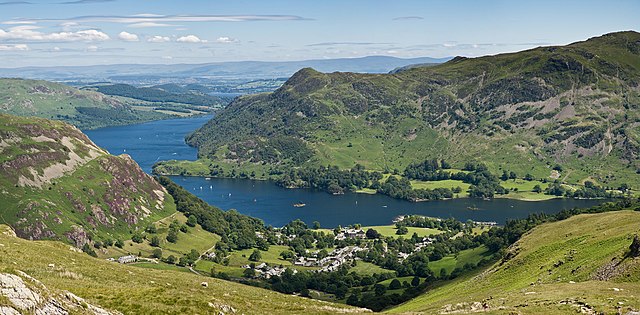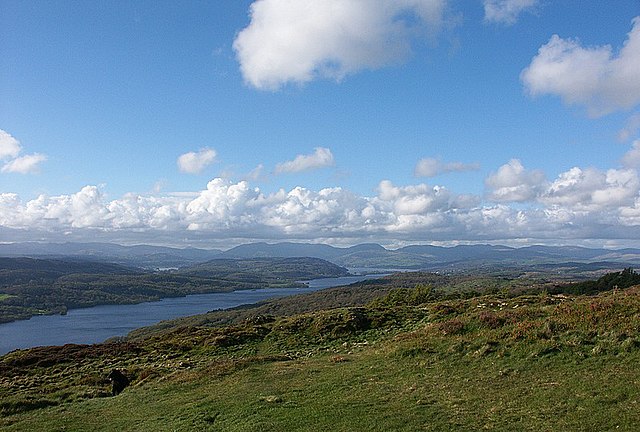Lake District National Park
The Lake District National Park is a national park in North West England that includes all of the central Lake District, though the town of Kendal, some coastal areas, and the Lakeland Peninsulas are outside the park boundary.
The area was designated a national park on 9 May 1951 (less than a month after the first UK national park designation — the Peak District). It retained its original boundaries until 2016 when it was extended by 3% in the direction of the Yorkshire Dales National Park to incorporate areas such as land of high landscape value in the Lune Valley.It is the most visited national park in the United Kingdom with 16.4 million visitors per year and more than 24 million visitor-days per year, the largest of the thirteen national parks in England and Wales, and the second largest in the UK after the Cairngorms National Park. Its aim is to protect the landscape by restricting unwelcome change by industry or commerce. Most of the land in the park is in private ownership, with about 55% registered as agricultural land. Landowners include:
Individual farmers and other private landowners, with more than half of the agricultural land farmed by the owners.
The National Trust owns around 25% of the total area (including some lakes and land of significant landscape value).
The Forestry Commission and other investors in forests and woodland.
United Utilities (owns 8%)
Lake District National Park Authority (owns 3.9%)The National Park Authority is based at offices in Kendal. It runs a visitor centre on Windermere at a former country house called Brockhole, Coniston Boating Centre, and Information Centres.
In common with all other national parks in England, there is no restriction on entry to, or movement within the park along public routes, but access to cultivated land is usually restricted to public footpaths, bridleways and byways. Much of the uncultivated land has statutory open access rights, which cover around 50% of the park.
Farmland, settlement and mining have altered the natural scenery, and the ecology has been modified by human influence for millennia and includes important wildlife habitats. Having failed in a previous attempt to gain World Heritage status as a natural World Heritage Site, because of human activities, it was eventually successful in the category of cultural landscape and was awarded the status in 2017.
Links
Images Gallery
-

-
 Lake District National Park (shown as number 2) in a map of national parks in England and Wales.
Lake District National Park (shown as number 2) in a map of national parks in England and Wales.
-

-
-
-

-

-

-

-

-

-

-
-

-

-
-

-

Comments
-
What can I say? Such a beautiful place with differing views, old stone houses, narrow roads, hilly terrain and so much sheep. So much to see and do, we'd definitely come again.
4 days ago -
One of my favourite places in the world. Came here first when I was only 7years old and have been here many times since as the beautiful scenery is always something I can't get enough of. Scarfel Pike is a must at least once in your life one of the more enjoyable mountain treks I've been on.
2 weeks ago -
Beautiful place to visit. The scenery is amazing, there is so much to see and is great place for walkers or taking a boat going on the lakes.
a week ago -
Fabulous combination of hills and lakes. Magnificent walks through varied terrain. One of our favourite regions in the UK.
2 weeks ago -
A beautiful part of our country, a great walk. We was out walking for 5 and 1/2 miles with 3 children aged between 4 and 8 years old. They all loved everything that was around them too.
2 days ago -
I can’t rate the lakes high enough. This is a true gem of the English landscape. So peaceful, so beautiful even on a rainy day! Visited grange-on-sands, Windermere and Ullswater. Highly recommend a trip to the lakes and will be exploring more now that I know the beauty of this land;-
a week ago -
-
What's not to like......the views are fantastic. People are friendly and there are lots of towns and villages to visit. Whether you want a quiet holiday, walking and climbing, playing around on the water or enjoying a night out. It's all there and more, I have been visiting for years and never fail to find something different to see or do.
2 months ago

















